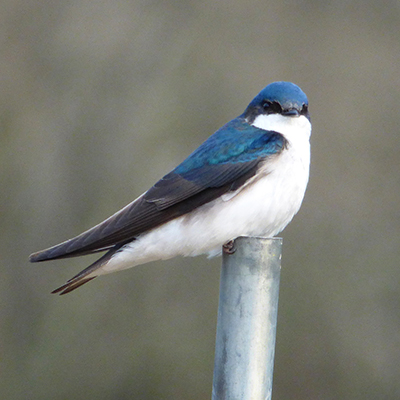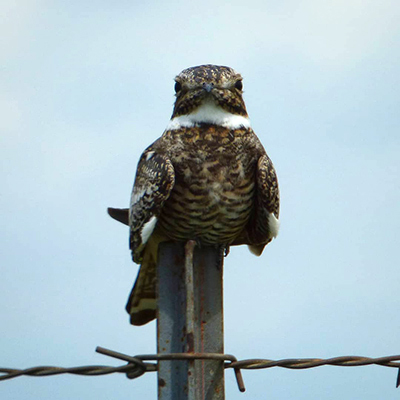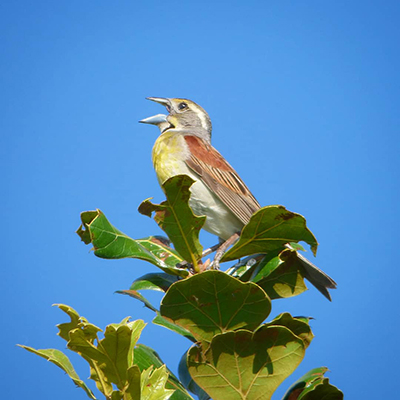Published May 7, 2021
By Dr. Mimi Kessler
Bird Coordinator, Global Center for Species Survival
Each spring, birds fly hundreds of miles to reach their breeding grounds in North America. On these journeys, migratory birds encounter an “invisible” enemy – glass windows.
Many of the songbirds that brighten our parks and yards travel long distances at night, and some use the stars to navigate. The bright lights of homes and buildings draw them in, dazzle and disorient them. Up to 600 million birds die in the U.S. each year after colliding with windows.
To reduce this nighttime danger, the Indianapolis Zoo keeps lights off and draws the shades on windows. Animal care team members monitor for bird strikes to ensure new precautions are implemented if needed, and share information with guests during macaw presentations about how everyone can reduce bird collisions.
These efforts are part of the Lights Out Indy initiative launched by Audubon Society of Central Indiana. Participating organizations and businesses across the city decrease building and parking lot lighting at night during the migration period. These efforts not only help birds complete their fantastic journeys, but also save energy.
You can play a role in saving birds by reducing nighttime light use at your home and workplace. Efforts are most needed during April and May, and again during fall migration in September and October. Helping at home can be as simple as closing the curtains or blinds before you turn on lights in the evening, and turning off external building lights when they are not needed. If possible, turn off the lights at your workplace before you leave for the day.
The biggest risk of nighttime collisions, and collisions involving groups of birds, is during migration period. But birds also collide with windows during daytime throughout the year, when they mistakenly fly towards reflections of branches and leaves in the window. To reduce these collisions, you can use tape or washable tempera paint to draw a pattern of lines on your window. The lines should be spaced closely enough so that birds don’t think they can fly between them. The Zoo uses decals to create this effect, and also positions plantings close to the windows to block bird flight.
More tips are available from Lights Out Indy and the American Bird Conservancy. You can also report collisions you observe to help researchers collect information about places that are high risk for birds.



Pick your day. Pick your price. Pick your package. Prices online are cheaper than at the gate.